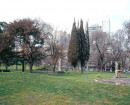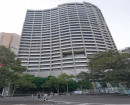JOHNSTONE PARK
24-28 GHERINGHAP STREET GEELONG, GREATER GEELONG CITY
-
Add to tour
You must log in to do that.
-
Share
-
Shortlist place
You must log in to do that.
- Download report
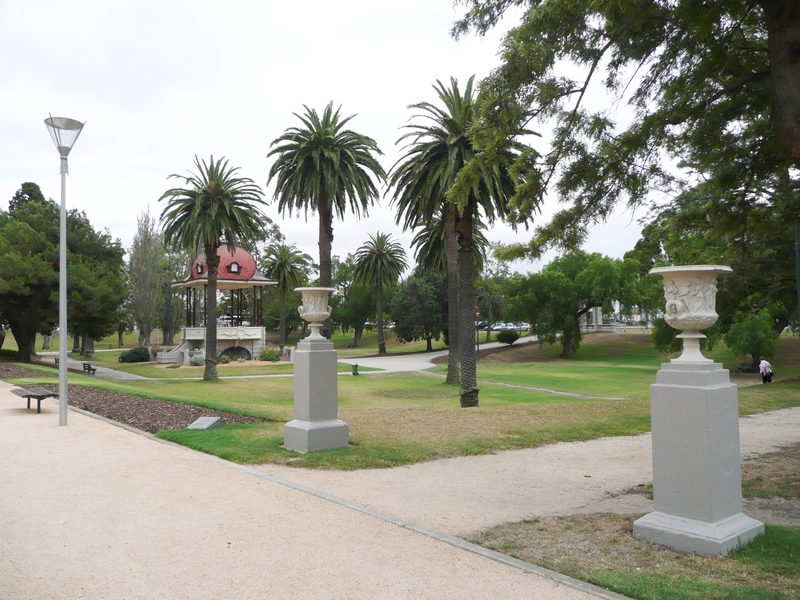

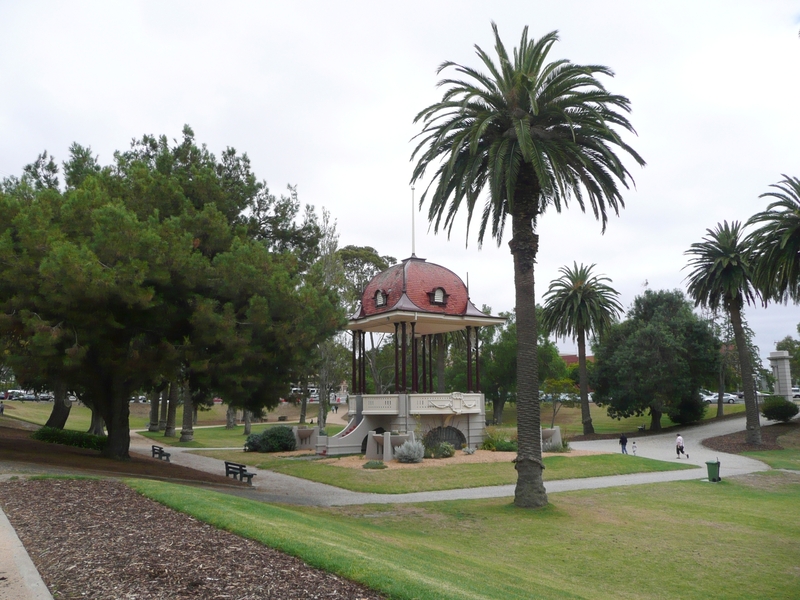
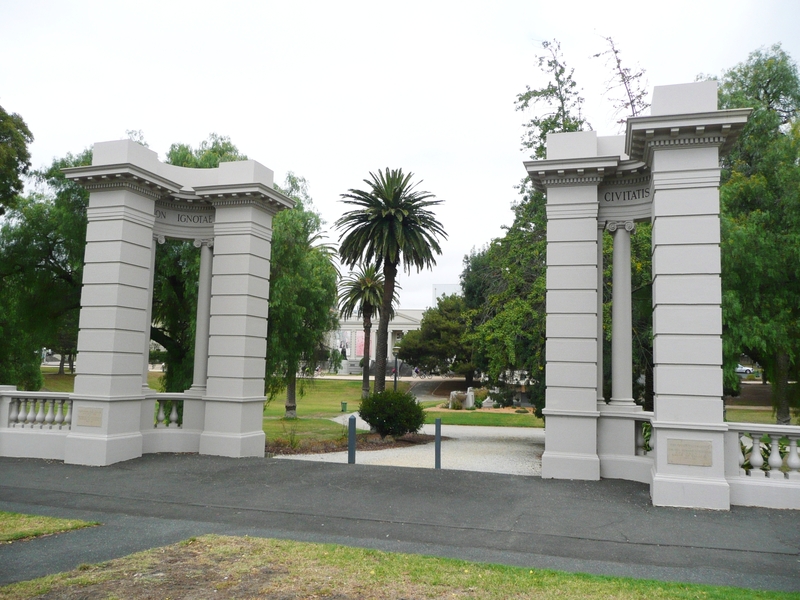
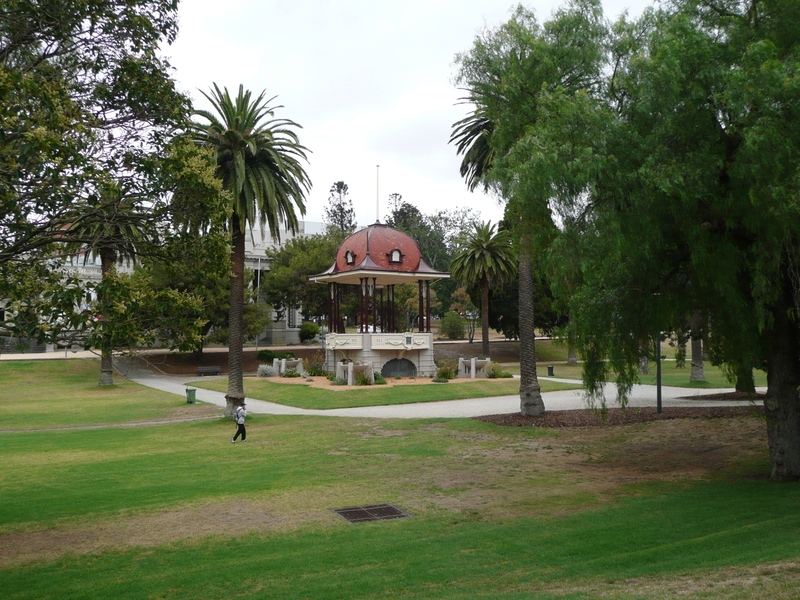
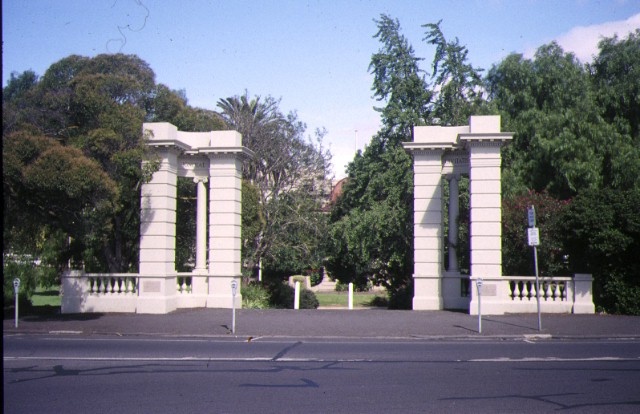

Statement of Significance
Johnstone Park, originally set aside in 1848, was developed in the late 1860s, and was officially opened in March 1872. It was named after Robert de Bruce Johnstone, who was Mayor of Geelong at that time. The park contains several structures including Stitt Jenkins drinking fountain (1860), the 'De Medici' urns (1873), Hitchcock Memorial bandstand and gates (1919 & 1925) and several later statues and monuments.
Johnstone Park is of architectural, historical, and social significance to Victoria.
Johnstone Park is of architectural significance for its association with Percy Everett and Laird and Buchan, who prepared the prize winning re-development scheme for the park in 1916 and who also designed the current bandstand in 1919. Percy Everett was a local architect who later became Chief Architect of the Public Works Department in Victoria. The drinking fountain is important as an example of early and unusual work designed by prominent architects Backhouse & Reynolds, not usually associated with any other projects except buildings. The 'De Medici' urns are of interest as rare and essentially intact example of cast-iron urns, produced by Andrew Handyside & Co., England, and imported in the early 1870s.
Johnstone Park is of historical significance for its association with Robert Hoddle and his original plan of Geelong (1838), in which the area known as Johnstone Park was used as a buffer between the town and the suburban allotments to the park's west.
The park is of social significance as an open areas and outdoor entertainment areas, particularly fashionable around the turn of the century. The Stitt Jenkins Drinking Fountain is important as the earliest existing fountain associated with the Temperance Movement, which advocated the restriction or abolition of alcoholic drinks.
-
-
JOHNSTONE PARK - History
Associated People: Percy Everett; Laird & Buchan; Andrew Handyside & Co; Backhouse & ReynoldsJOHNSTONE PARK - Permit Exemptions
General Exemptions:General exemptions apply to all places and objects included in the Victorian Heritage Register (VHR). General exemptions have been designed to allow everyday activities, maintenance and changes to your property, which don’t harm its cultural heritage significance, to proceed without the need to obtain approvals under the Heritage Act 2017.Places of worship: In some circumstances, you can alter a place of worship to accommodate religious practices without a permit, but you must notify the Executive Director of Heritage Victoria before you start the works or activities at least 20 business days before the works or activities are to commence.Subdivision/consolidation: Permit exemptions exist for some subdivisions and consolidations. If the subdivision or consolidation is in accordance with a planning permit granted under Part 4 of the Planning and Environment Act 1987 and the application for the planning permit was referred to the Executive Director of Heritage Victoria as a determining referral authority, a permit is not required.Specific exemptions may also apply to your registered place or object. If applicable, these are listed below. Specific exemptions are tailored to the conservation and management needs of an individual registered place or object and set out works and activities that are exempt from the requirements of a permit. Specific exemptions prevail if they conflict with general exemptions. Find out more about heritage permit exemptions here.
-
-
-
-
-
FORMER GEELONG WOOL EXCHANGE
 Victorian Heritage Register H0622
Victorian Heritage Register H0622 -
FORMER SCOTTISH CHIEFS HOTEL
 Victorian Heritage Register H0662
Victorian Heritage Register H0662 -
GEELONG TOWN HALL
 Victorian Heritage Register H0184
Victorian Heritage Register H0184
-
'Boonderoo', House and Outbuildings
 Greater Bendigo City
Greater Bendigo City -
'Riverslea' house
 Greater Bendigo City
Greater Bendigo City -
1 Adam Street
 Yarra City
Yarra City
-
-






